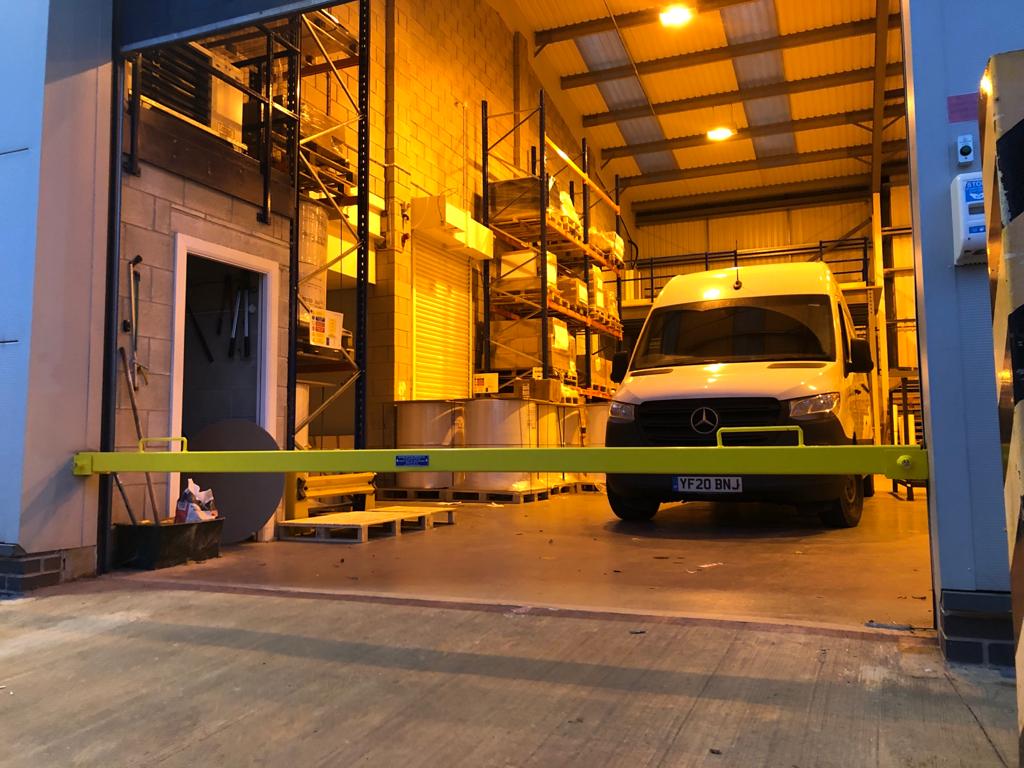
Many commercial and industrial premises have several security measures in place to prevent robbery during the working day and to protect their property from being burgled outside of regular business hours. However, locks, alarms, and CCTV may not be enough to keep ram-raiders at bay.
Ram-raiding is a violent criminal activity that involves using a vehicle to ram into an access point, forcefully breaking through windows, doors, or even walls to quickly gain entry to the premises. The criminals will typically steal as much as they can grab within just a few minutes before driving away, leaving extensive damage in their wake.
Additional measures like anti-ram barriers are needed to block ram-raid vehicles from slamming into the shutters or other barriers that aren’t designed to stand up to the impact of a vehicle. Anti-ram vehicle barriers are designed to absorb most of the impact in such an event, limiting the damage to the building and denying access.
Not sure whether your premises would benefit from anti-ram raid barriers? Here are some of the advantages of anti-ram barriers that could make a big difference to the security of your business.
Deter vehicle-assisted burglary
According to the latest official figures, burglary and vandalism are joint second for the most common crimes committed in England and Wales.
The government’s crime against business statistics reveal that 5% of businesses experienced an attempted burglary in 2022, with 7% experiencing a burglary involving entry to their premises. Businesses with 1 to 49 employees were more likely to experience this.
While there were more attempted burglaries in urban areas than rural areas (5% vs 2%), the number of burglaries with entry are around the same (7% and 6%) – and both attempts and entries were twice as frequent for premises that are open to the public compared to premises that aren’t.
There are no specific numbers for ram-raid burglaries, but the existing crime data does suggest that medium to large businesses in any location with any kind of public access are at risk of burglars breaking and entering.
The ‘smash and grab’ style of burglary that ram-raiding facilitates is only possible if the vehicle – which could be a bike, a car, van, or any type or size of vehicle – can approach the access point at speed and ram against the window or doorway.
Ram-raiders cannot gain entry to your premises this way if they cannot generate a direct impact with enough force against the building frontage, which is why installing an anti-ram bar or anti-ram gate to block their path can prevent entry.
Even seeing an anti-ram raid barrier in place can be enough for would-be criminals to take your business off their list of potential targets. The risk of severely damaging the vehicle, hindering their getaway without guaranteeing any gains, should put them off trying.
Cost-effective loss prevention
Further data from 2022 on the impact of crime on businesses in England and Wales revealed that almost half of commercial crime victims experienced financial loss, and almost a third experienced loss of goods and services.
On top of the negative impact on finances, goods, and services, dealing with the crimes required extra staff time for a third of businesses.
This shows that businesses not only have to recover from the initial loss of property after experiencing a crime, but many also end up spending extra time and money cleaning up the damage – which can be especially severe in the case of a ram-raid.
When a vehicle rams into a building, this can damage both the exterior and interior, making it unusable until the destruction can be repaired, and thereby forcing the business into possibly extensive downtime until they can operate safely again.
Even when repairs are completed and the business is up and running again, customers and clients may not want to return somewhere they perceive as a target of violent crime – with 13% of businesses who were victims of commercial crime experiencing reputational damage.
The upfront cost of installing anti-ram vehicle barriers should pay for itself over time by limiting not just the loss of stolen items and repair expenses, but the resulting loss of trade from downtime and dented customer confidence, too.
Anti-ram raid barriers offer a cost-effective way to reduce the risks of loss resulting from ram-raid burglaries – though, of course, they work best combined with measures such as security shutters that prevent unauthorised entry for thieves without a vehicle, as well.
Custom anti-ram barriers
In order to protect your premises effectively, an anti-ram barrier must be manufactured and fitted to the precise specifications of the access point that it should be defending. It should also be unobstructive during working hours, but lockable to secure it in place when in use.
As trusted providers of security barriers like roller shutter doors, we also supply anti-ram raid barriers here at Roller Shutter Services. These are made to measure using robust steel box sections, and can be finished with a powder coat in a standardised RAL colour of your choice.
Brighter colours in contrast to the surrounding environment can give an anti-ram barrier more of an immediate visual impact, ensuring that potential ram-raid thieves can’t miss seeing it when scouting for targets and will likely move on without attempting entry, leaving your business alone.
If you only have shutters to protect an access point that is exposed to a public area, ram-raiders might be tempted to take their chances. However, seeing frontages guarded by anti-ram security barriers should make ram-raiders think again.
To order a bespoke anti-ram gate for your business premises, or to discuss which type of anti-ram raid defence would be best for your entry points, contact the Roller Shutter Services team. Call us on 0800 328 9356 or email info@rollershutterservices.co.uk for more information.
